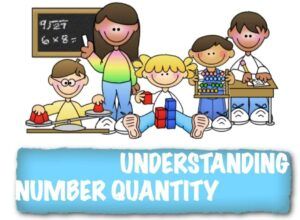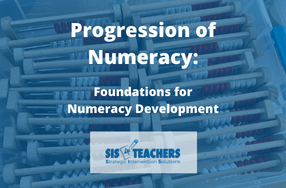Kids can look at a digit and recognize it as an 8, but they often don’t understand what’s behind the digit. Yes, the symbol means 8, but 8 could be 4 and 4, or 5 and 3, or 6 and 2. In some countries, they teach letters last and the sounds first. If the student doesn’t know what sound the K makes, there’s no point in looking at the symbol and knowing its name. The same is true of math.
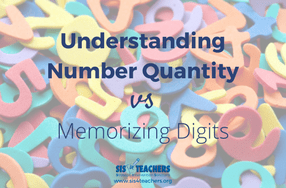 The idea for my Understanding Number Quantity Screener was born when my son, Connor, was in preschool. It was a fabulous school, with plenty of integrated play, but like all preschools, there started to be pressure for “Kindergarten readiness” around age four. Math was a big part of this Kindergarten readiness. I picked up my son one day and saw a sign above the coat rack that said “I can count to 100!” next to the other signs that said things like “I can zip my coat” and “I can tie my shoes.” Underneath, there were kids’ names listed if they could actually perform the skill. The initial idea was to encourage students to master certain goals, and my son’s name was on the wall under “I can count to 100!” When we got in the car, I asked him if he could count to 100 for me. He said yes and the whole way home I listened to him count.
The idea for my Understanding Number Quantity Screener was born when my son, Connor, was in preschool. It was a fabulous school, with plenty of integrated play, but like all preschools, there started to be pressure for “Kindergarten readiness” around age four. Math was a big part of this Kindergarten readiness. I picked up my son one day and saw a sign above the coat rack that said “I can count to 100!” next to the other signs that said things like “I can zip my coat” and “I can tie my shoes.” Underneath, there were kids’ names listed if they could actually perform the skill. The initial idea was to encourage students to master certain goals, and my son’s name was on the wall under “I can count to 100!” When we got in the car, I asked him if he could count to 100 for me. He said yes and the whole way home I listened to him count.
Why did I as a teacher/parent not really care that my four year old could count from 1 to 100? Because it’s just like saying the ABCs. Yes, I was proud of him, but he had simply memorized the digits and the patterns.
A few weeks later, there was another sign on the wall that said “I can read my numbers from 1 to 20” and Connor’s name was not on that list. In his classroom, families were encouraged to look through their portfolios to see who had mastered what, and since his class was outside playing when I got there, I decided to look at Connor’s portfolio. I flipped through to number recognition and saw that he couldn’t identify 13, 14, or 15. Those are tricky teen numbers, but I wondered what that might mean.
When I asked the teacher how he was doing in numeracy, she told me he was doing great! “He can count from 1 to 100, he can skip count by 10s and 5s and is working on recognizing the numbers, but is having trouble with the tricky teens.” What do those things have to do with numeracy? Nothing. The teacher had the manipulatives and math products (rekenrek, Counting Buddy, etc.), and she knew what the report card asked about “Kindergarten readiness,” but she had no idea what numeracy meant.
I still really wondered how my son was doing with his numeracy. So I asked the teacher if I could come to the school and screen her class to see if they actually understood number quantity or if they were memorizing procedures with concepts that they don’t understand, like we see often with older students a lot.
If my son didn’t recognize the number 13, I wondered what would happen if I were to show him 13. I took a double ten-frame with 10 on the top and 3 on the bottom, and asked him how many I had. Like any four-year-old, he touched each dot and counted all the way to 13. I was happy that he had one-to-one correspondence, however, it told me he was nowhere near ready to be recognizing the number 13 because he didn’t understand the quantity.
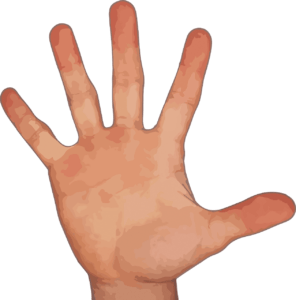 The Understanding Number Quantity Screener is designed to see if children have conservation to a number. Getting kids to understand the concept of conservation is really important and foundational for success in math. Show a young child in preschool, Kinder or even first grade, your hand and tell them you have 5 fingers. You will always have five fingers because you won’t grow any more and you really hope you don’t lose any either. But, when the students try to add 5 and 2, even though they know their hand has five fingers, they’ll still recount, touching each finger to get to 7 instead of starting with five on one hand and just counting up two more on the other hand. If you show them 5 on the Counting Buddy, can they say “5” or do they have to count? If you show them 6, can they say “6” without counting because they know it’s 5 and 1 more? You are looking to see what happens if you change the arrangement of the number – does the child go back to recounting? If so, they don’t have that conservation yet.
The Understanding Number Quantity Screener is designed to see if children have conservation to a number. Getting kids to understand the concept of conservation is really important and foundational for success in math. Show a young child in preschool, Kinder or even first grade, your hand and tell them you have 5 fingers. You will always have five fingers because you won’t grow any more and you really hope you don’t lose any either. But, when the students try to add 5 and 2, even though they know their hand has five fingers, they’ll still recount, touching each finger to get to 7 instead of starting with five on one hand and just counting up two more on the other hand. If you show them 5 on the Counting Buddy, can they say “5” or do they have to count? If you show them 6, can they say “6” without counting because they know it’s 5 and 1 more? You are looking to see what happens if you change the arrangement of the number – does the child go back to recounting? If so, they don’t have that conservation yet.
Simply put, conservation is knowing how much the number is without recounting it. It’s a developmental mathematical skill that kids can start at about the age of four. There are certain levels of development, and we do have to be careful that we observe the developmental sequences for conservation. For example, a preschooler should only be able to do an arranged line up to 10, but they can do a scatter up to 5. A Kindergartener towards the end of the year could do an arranged line up to 20, but they could do a scatter up to 10.
When we assess conservation to 5, we represent the number inside of a 5-frame. Some children actually do memorize the arrangement of the 5-frame, so we want to make sure we rotate the 5-frame (horizontal and vertical) to see if the students can tell how many without recounting.
When I screened my son’s preschool classroom, the students did not have conservation to 5. They could identify the 1, the 2, and the 3 on the 5-frame, but when I showed them a 4, 90% of the students said that it was worth 5. When I showed them the 5 on the 5-frame, they said it must be 10. Their actual understanding of number quantity was very weak, yet the objective in the classroom was to skip count by 5s and 10s, count to 100 and recognize numbers. This seemed completely developmentally inappropriate.
Once we found out where the kids in Connor’s class were with numeracy, we brought in the Counting Buddies, rekenrek activities, and Deck O Dots to help them develop the skills they needed. Subitizing, which means “tell me how many there are without counting,” isn’t a mathematical milestone, but is actually a great way to help students develop conservation!
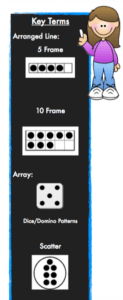 In the Number Quantity Screener, if a child has mastered the 5-frame level, they can move on to the 10-frame. Just like with the 5-frame, you want to rotate the 10-frame to let kids view it differently, and you might even branch out to show the number on a Counting Buddy or top row of a rekenrek. Once they understand conservation in an arranged, linear way (with a 5- or 10-frame, Counting Buddy, or rekenrek), we move kids move up to conservation of dice and dominoes. Since students aren’t playing as many board games, they don’t know what the 5 side of the die looks like. Then we look at conservation, within scattered arrangements. If we have students who don’t make it through conservation to 5, we’ll look to see if they have kinesthetic one-to-one correspondence (check this blog post for a FB Live video about this!).
In the Number Quantity Screener, if a child has mastered the 5-frame level, they can move on to the 10-frame. Just like with the 5-frame, you want to rotate the 10-frame to let kids view it differently, and you might even branch out to show the number on a Counting Buddy or top row of a rekenrek. Once they understand conservation in an arranged, linear way (with a 5- or 10-frame, Counting Buddy, or rekenrek), we move kids move up to conservation of dice and dominoes. Since students aren’t playing as many board games, they don’t know what the 5 side of the die looks like. Then we look at conservation, within scattered arrangements. If we have students who don’t make it through conservation to 5, we’ll look to see if they have kinesthetic one-to-one correspondence (check this blog post for a FB Live video about this!).
For the first time in our project schools, we’re helping students discover what is going on behind the number. Think of this screener as phonemic awareness for your math. I can’t see it or touch it, but I can ask a student how they knew it was 6 and they can tell me, “I saw five in red and one more makes 6.” We can get an idea of what the student’s brain is doing when it processes number quantity, just like we could if we were trying to get them to process language.
As the school year launches, we’d love it if you’d screen your Kindergarteners! It takes less than 5 minutes per student, but it’s almost like a developmental reading assessment to figure out where kids are with numeracy. The information you gather through this screener will help you know how to drive your instruction. Inside the screener, there is a spreadsheet for you plot your whole classroom to see which kids are on which level with conservation.
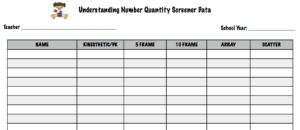
This information will help you create an effective guided math group. You can see which students might be at risk, meaning they don’t have kinesthetic one-to-one correspondence, and try to get to them first. If I have kids on the dice/dominoes, I know they have some number sense within a particular unit. It will also help as you plan your application games and which color Deck o Dots to use.
The screener is available in two formats: Digital Download and Toolkit. The toolkit includes a CD with a digital copy of the documentation, (including a parent letter you can edit) and beautiful and color copies of anything that you’ll need printed in color on card stock.
Now is the perfect time to administer this screener to your classroom. It’s quick and easy, but if you screen the students again in January and then again in April/May, you will have a host of amazing data to help build your students’ numeracy.
From now until Sept 30, 2017, get your screener for 20% off! Coupon Code: sis4screeners

